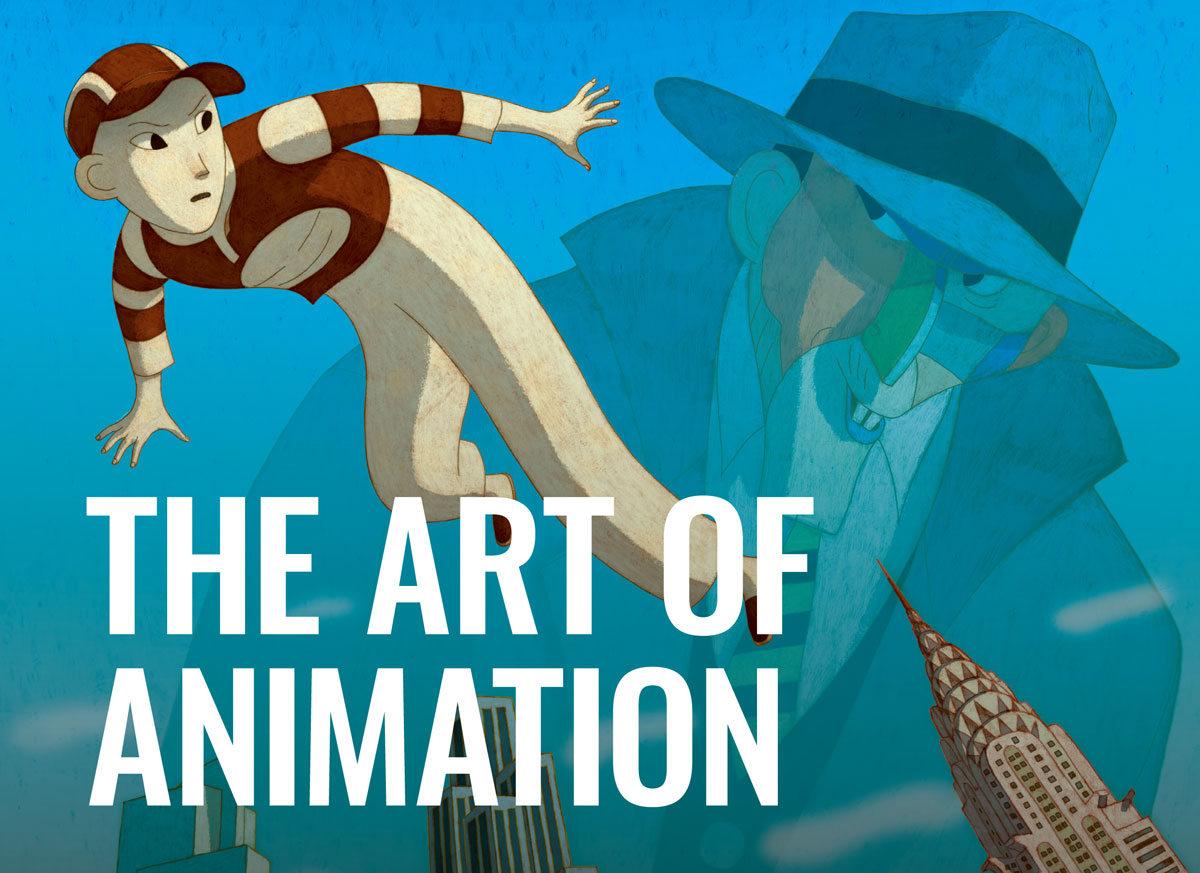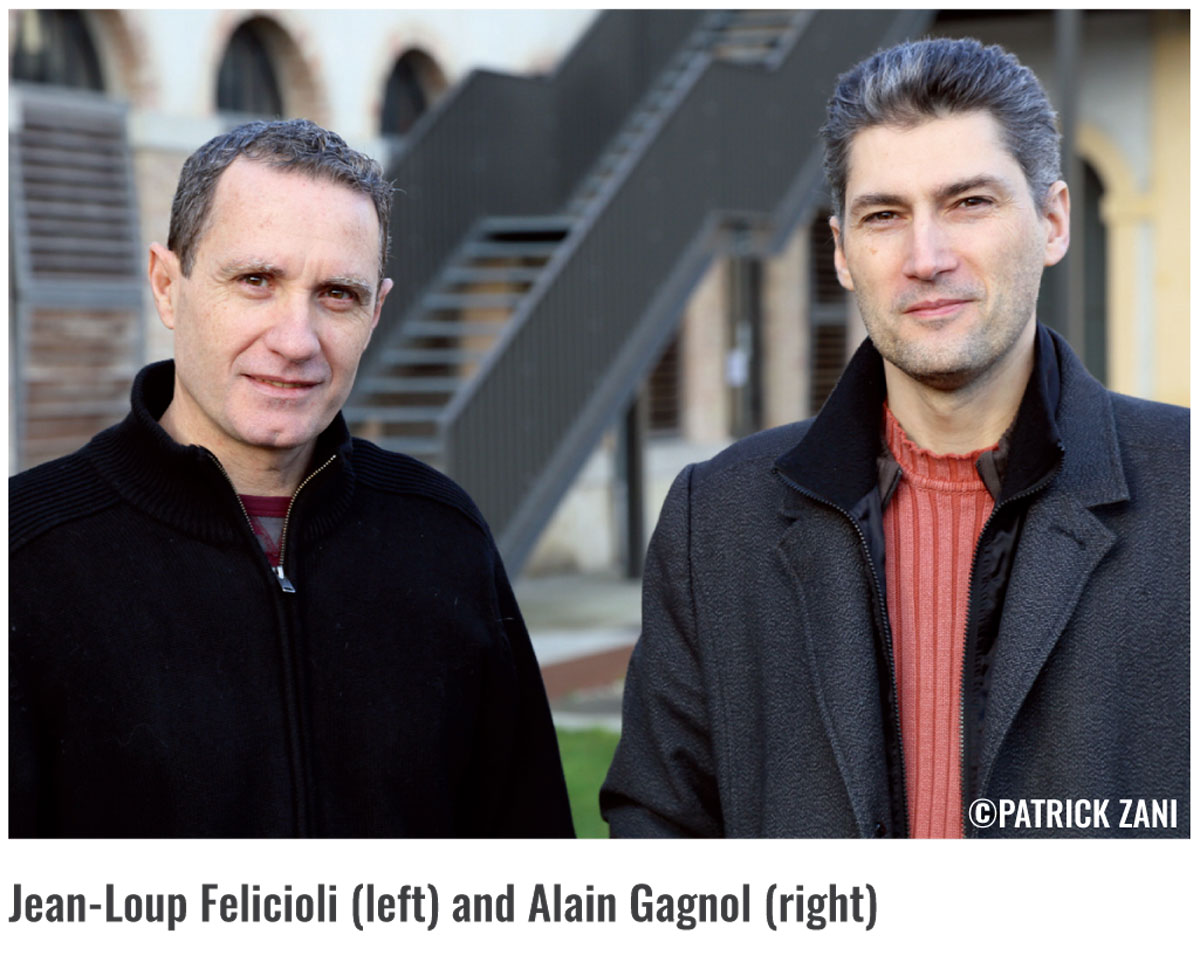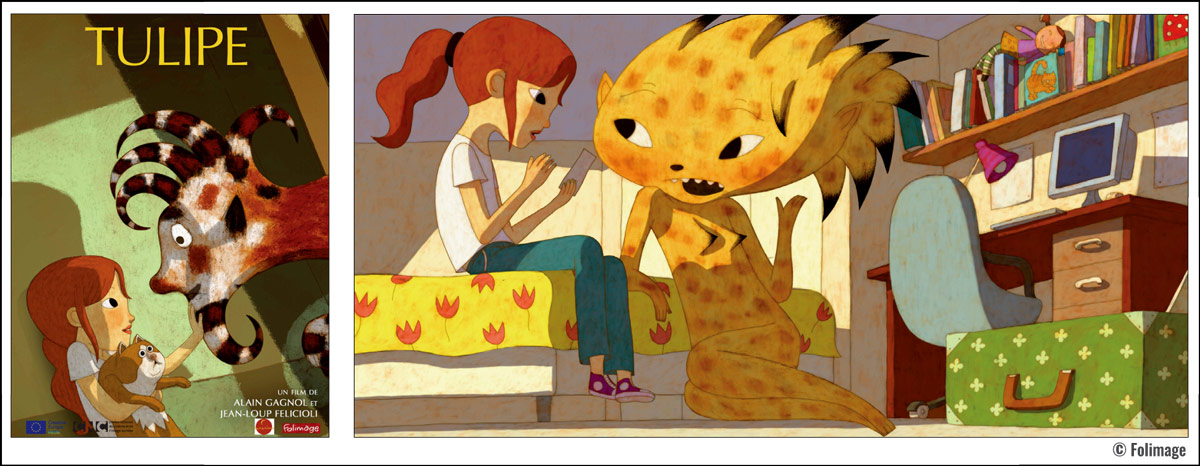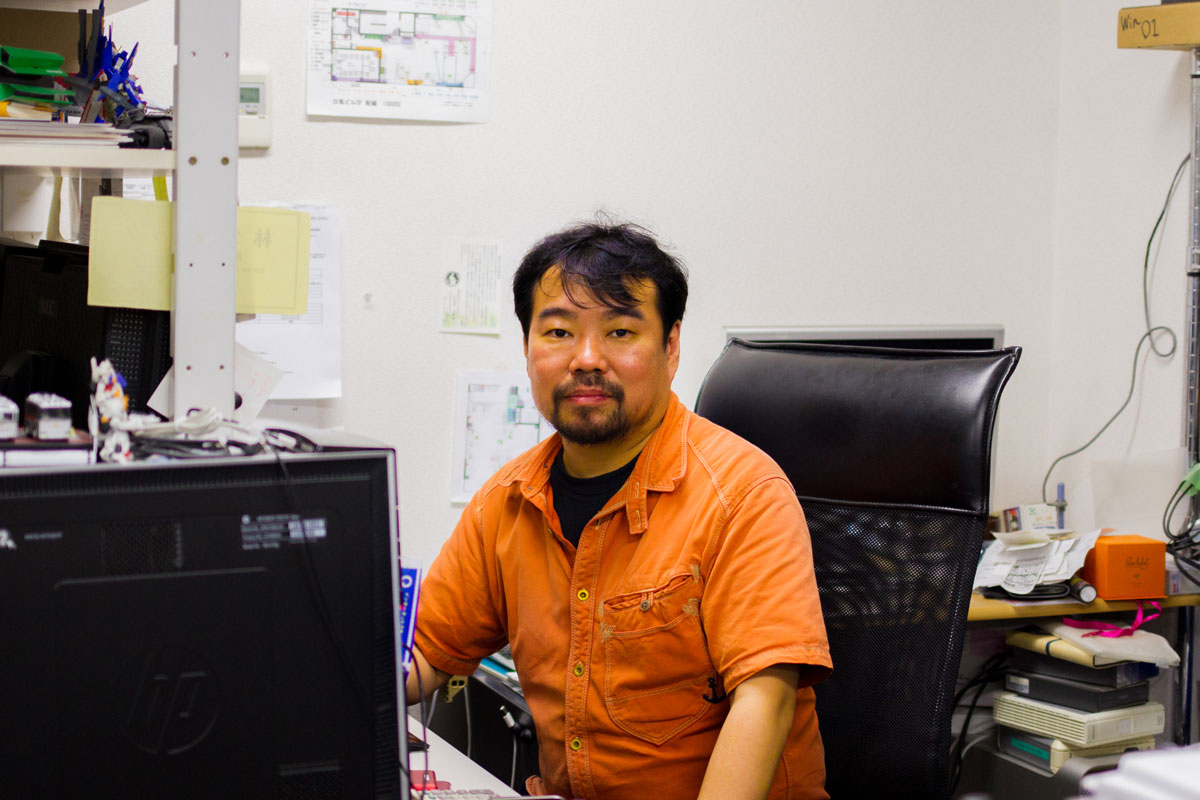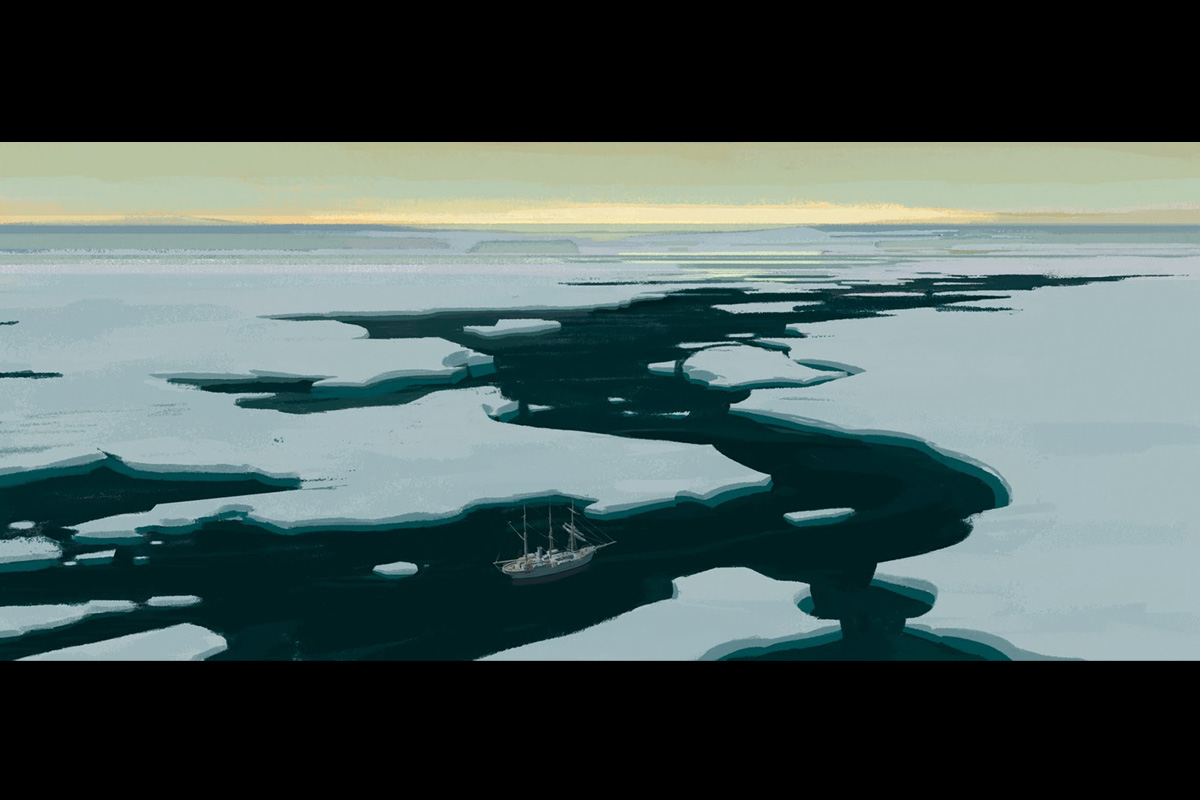Gagnol and Felicioli’s distinguished storytelling and their carefully crafted animation style using hand-drawn animation has been attracting audiences from around the world. Their first directed animated feature film, A Cat in Paris, was nominated for an Oscar in 2012. It also received a nomination for the César Award for Best Animated Film in 2011. Their next film, Phantom Boy, was released first in France in 2015. The theatrical release in the USA was in the summer of 2016. Now they are in production of their third feature film Tulip, which tells the story, filled with fantasy, of an 11-year old girl who sees monsters. We sat together with Alain Gagnol and Jean-Loup Felicioli to hear about their creative journey and passion for the animation.
The Beginning of the Collaboration
Gagnol and Felicioli recall that they had begun their career in animation about 20 years ago by chance. Felicioli studied Fine Arts with a desire of expression through drawing and painting at a school where Jacques-Rémy Girerd, the founder of Folimage, was teaching in Lyon. Felicioli tells that working in the animation industry was by chance and he actually wanted to work in graphic novels, but started working as an animator in Folimage after graduating from the school.
Gagnol also studied Fine Arts, but he realised that it was very hard to find any work related to Fine Arts. He had a chance to spend his military service in the civil service and spent two years on the job at Folimage.
They explain that Folimage had a culture of encouraging collaboration on small projects and shorts among their employees. They knew each other for a long time as they had worked together for 10 years on 14 short films by the time they started working on the feature films.
A chance to direct their first feature film A Cat in Paris came to them a little unexpectedly. Gagnol says, “After creating 14 shorts, we wanted to try a slightly longer production and the initial intention was to start with a 26-minute-long film, but then Mr. Girerd said, ‘oh, a feature length film is the same and not much different, just go for it!’”.
Then, Gagnol wrote the script and Felicioli worked on the graphics. This is how their collaboration started.
Their collaboration style, where Gagnol writes the story and Felicioli draws, is a good way to complement each other with their own strengths. Felicioli says, “I think it would be quite complicated to do everything alone. Not everyone is gifted with a talent of being good at both script and graphics”. Gagnol adds, “I come up with a story, and then it has to be an idea that Jean-Loup also likes. Obviously, it’s a little bit difficult to work in two. We don’t always agree, but we know each other long enough that we can construct the conversation and move on”.
The Role of the Director to Get the Best Out of the Team
It is crucial to have the best creative team to create animation of the highest quality. The key to working with the team well is “to set your Ego aside”, according to Felicioli. He continues, “It is quite difficult to work in a team. But we found what work best. Basically it is to do a lot of preparation before anyone else gets involved. We work on the project for a year before we delegate the work”.
The Making of A Cat in Paris
The Initial Idea of the Story
According to Gagnol, the root of the project was to make a “crime novel”, which is quite different from the completed film and originally aimed more towards adults. Gagnol is inspired by live action films directed by Francis Ford Coppola and Martin Scorsese, and American cinema in the 70s to list a few among the many to start with.
Gagnol says, “There were about 20 versions of the script targeting adults. In the first draft, there was a shot where a man shoots himself with a gun”.
The idea evolved gradually from the initial idea. Gagnol wrote an original script with a finished story and showed it to Mr. Girerd and Felicioli. Having heard their feedback and receiving more ideas, Gagnol developed it further, which took two years. The elements that were in the idea of the story from the start are the cat, the bugler and the little girl. They also had the idea of the little girl leaping through time where the audience finds her at 10 years old or 20 years old. In the final story, they made the little girl to be at the age of 10 years old.
Gagnol says that the rejection of funding often influences the story. The fact that it became a film for children is the result of such feedback, for example.
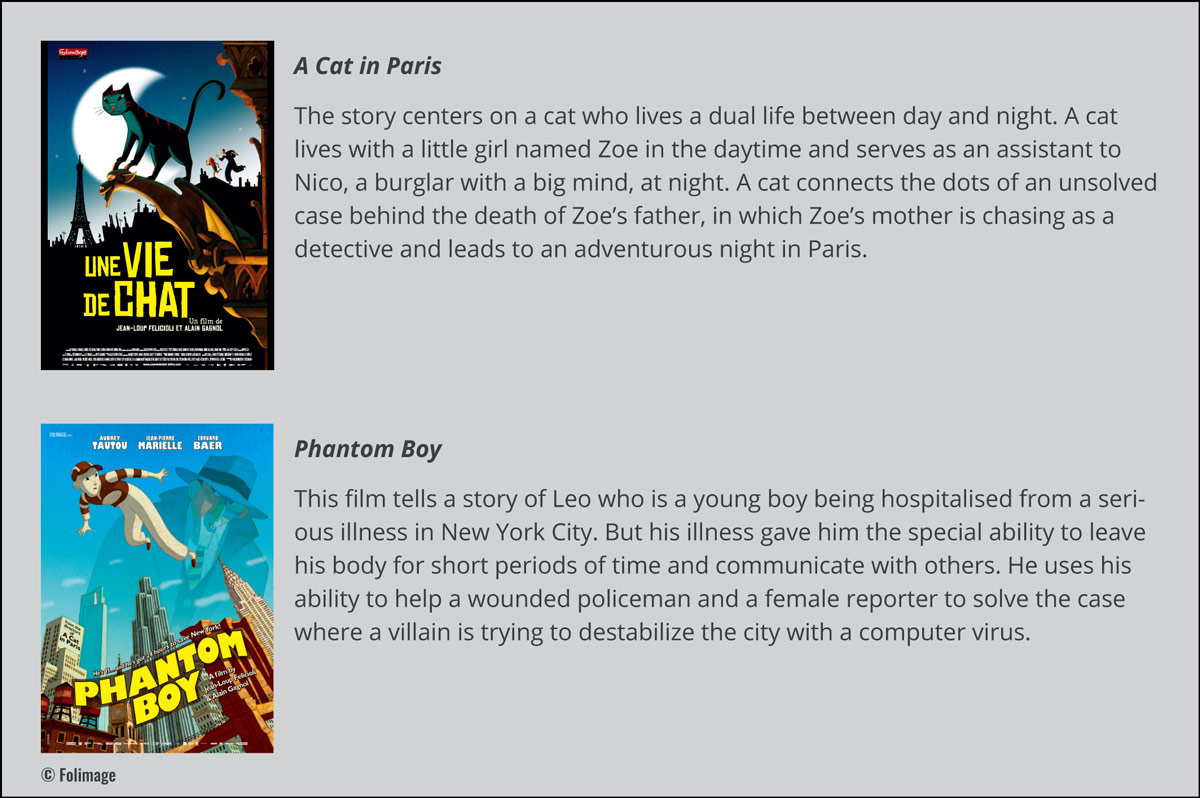
Pushing Beyond their Own Limits
With A Cat in Paris, from the beginning, they wanted to push their limits in terms of their style. All of the graphics were influenced by French comics (“bande dessinée”), as well as by the Belgian artist Hergé who created The Adventures of Tintin and his drawing style “La ligne claire”. Felicioli says, “The style found in Bande Dessinée is very developed and rich, it’s a great influence to me along with Fine Arts. The idea with A Cat in Paris was to have mixture of both. My initial idea was to make a film that looked like a moving painting. Alain’s psychological stories were a good opportunity to do this.”
Felicioli also tells that he had influence from other art forms like comic artists, namely Jacques de Loustal and Lorenzo Mattotti, and painters such as Modigliani, Picasso, and Bonnard.
One of the amazing characteristics of A Cat in Paris is the smooth yet unique animated movement of characters. For Gagnol, animating the drawings of Felicioli is very natural to him. “Jean-Loup’s drawings correspond well to my way of animating. His drawings are very dynamic. I used his curves and exaggerate them. I also tried not to lose the character and the meaning of the scene by not exaggerating the movement too much. It is very important not to lose the sight of what we want to tell”.
On the other hand, it’s not an easy process to animate. Gagnol continues, “The graphics of Jean-Loup is very difficult to animate and we also had a lot of trouble of keeping it intact. It was sometimes difficult for animators to understand the internal logic of the drawing. It must be said that there was no model-sheet and each layout became the model to follow”.
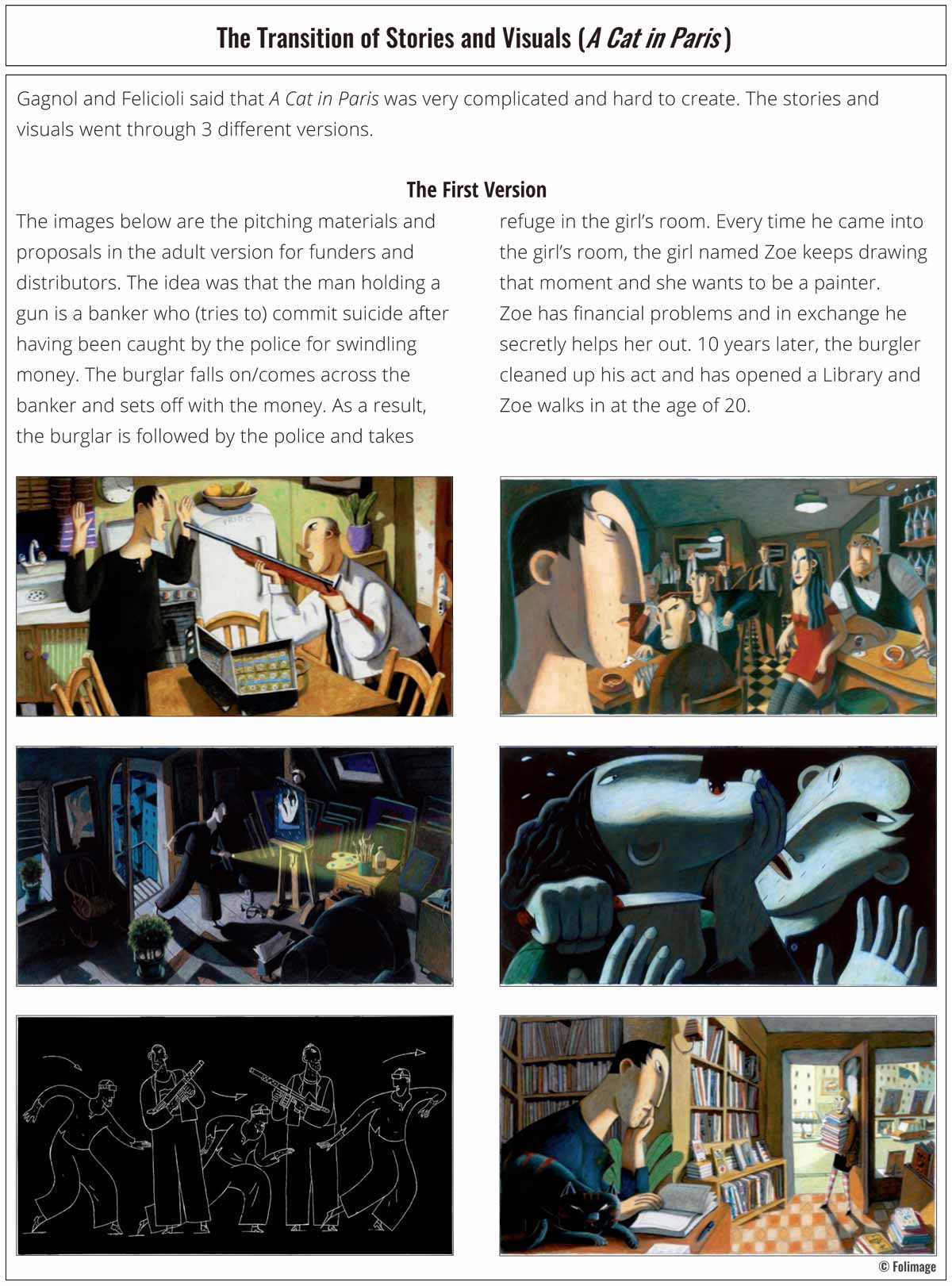
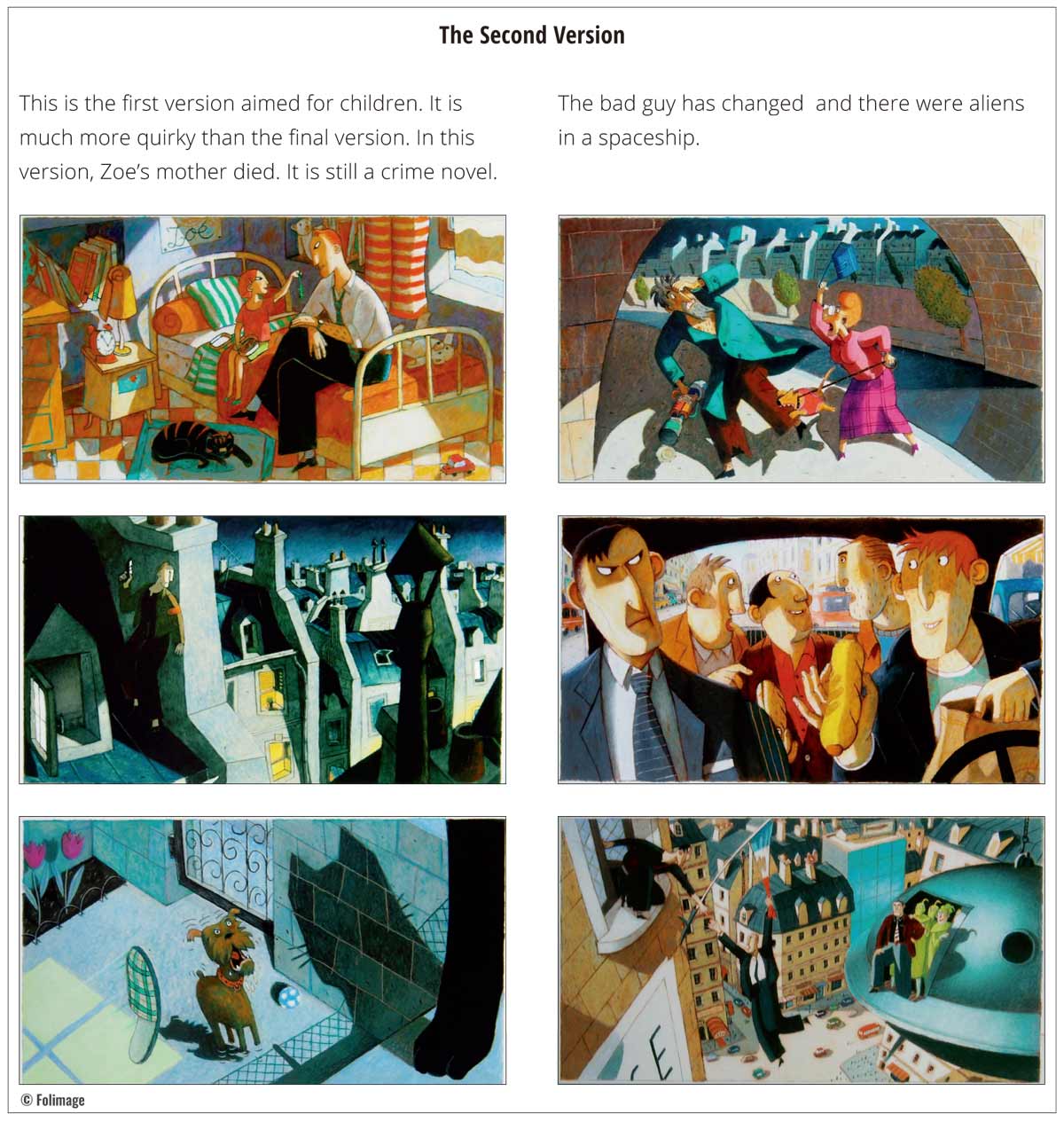
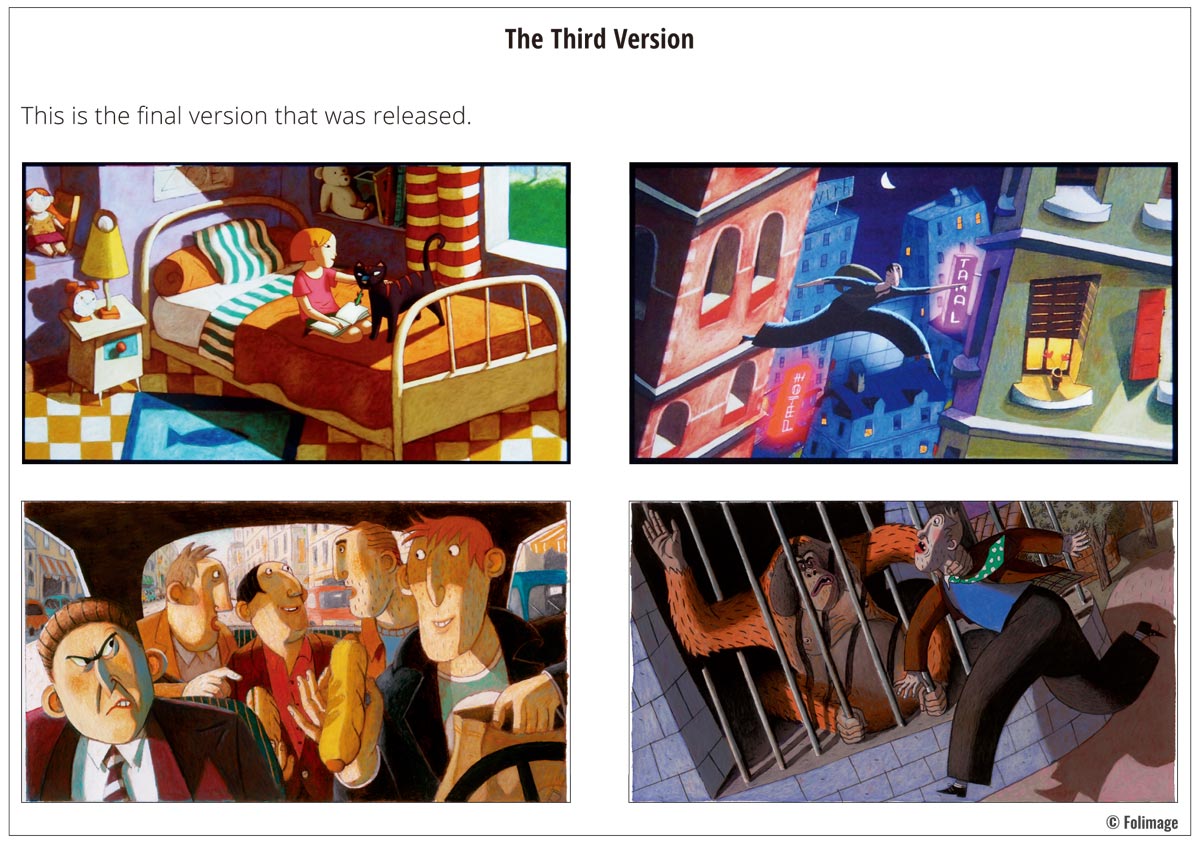
The Music
The music is memorable in A Cat in Paris. Gagnol and Felicioli made an animatic first using pre-existing music and this gives Serge Besset, the composer, a general direction. Gagnol describes Besset’s music as “very virtuoso and composes melodies directly with us. We sometimes ask him the impossible (a cheerful music and sad at the same time) and the miracle is that he gets there!” Gagnol says that discussing other films also serves as a reference for the mood and feel of the scenes.
The Making of Phantom Boy
The Original Idea
Gagnol tells that his original idea for Phantom Boy was to blend two genres: a thriller and a fantasy film. “This allowed us to create a brand new atmosphere after A Cat in Paris, while keeping a thriller atmosphere. As I am a fan of superhero comics, I quickly wanted to star a boy with extraordinary powers”.
Gagnol continues, “Then, I had the idea of a sick boy, Leo. In general, characters with severe diseases are used in cinema melodramas. The idea was that Leo is not defined exclusively by his illness. He’s a hero who experiences adventures full of suspense and humour.”
Lessons from A Cat in Paris
Gagnol thinks that A Cat in Paris has given them the experience and confidence, but they met the same problems with the graphics.
“When a design is not easy to animate, it is natural to have problems. We set up our working method over fifteen years of creating fourteen short films. There have been no big organizational changes. We spend a lot of time on the preparation, which is the only way to control as much as possible the production of the film. The goal is to get the closest possible result to our ideal vision”.
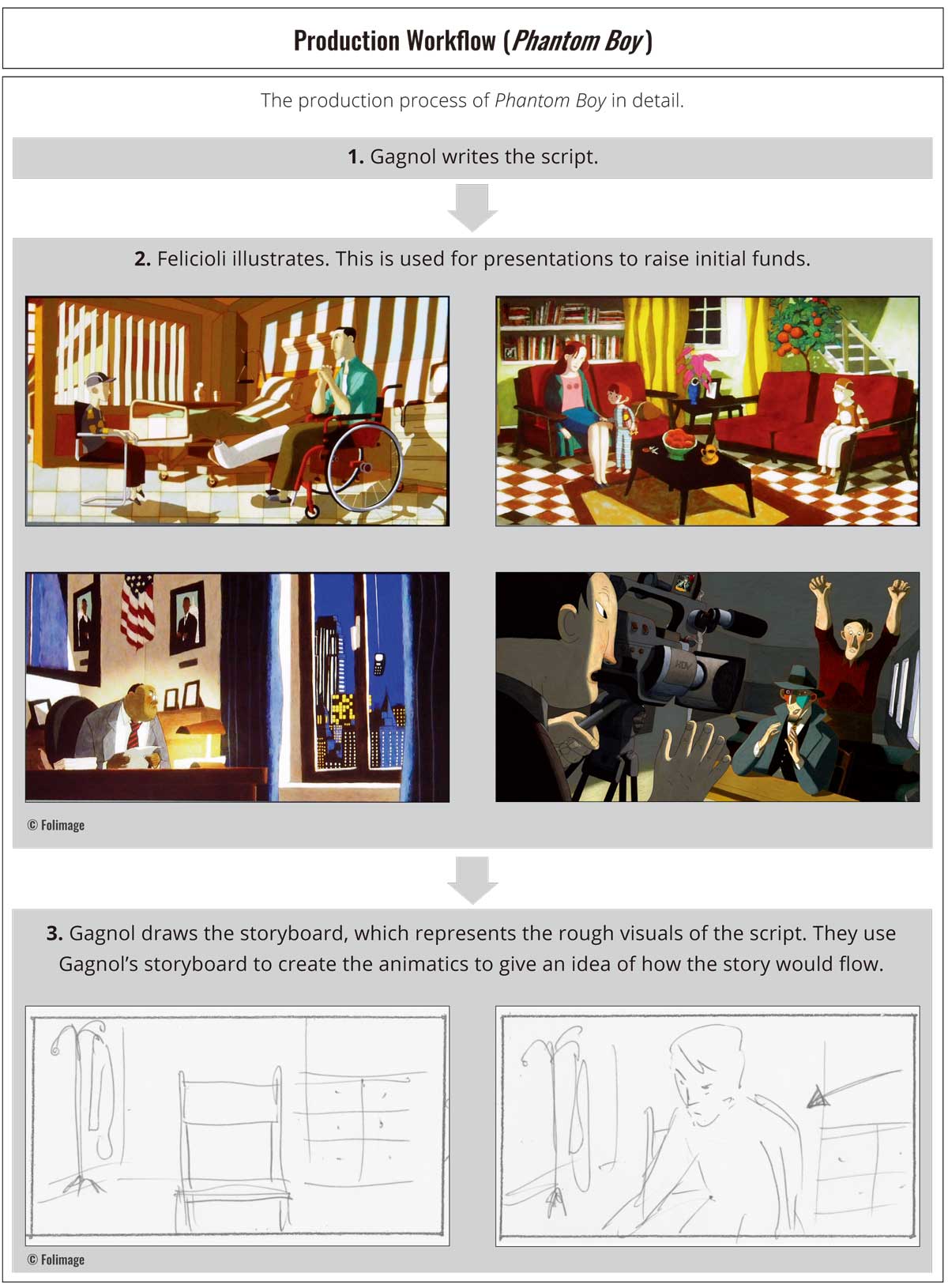
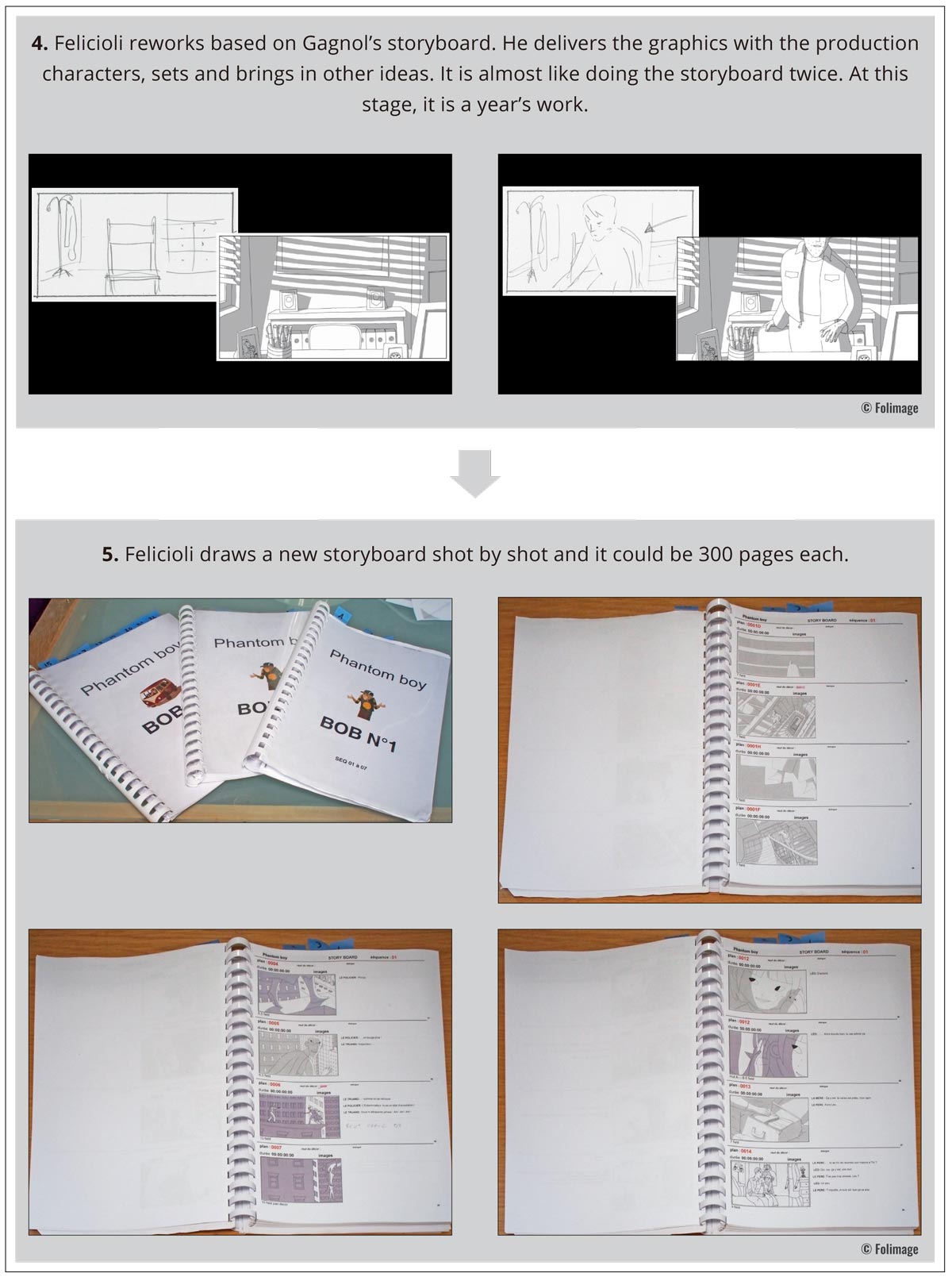
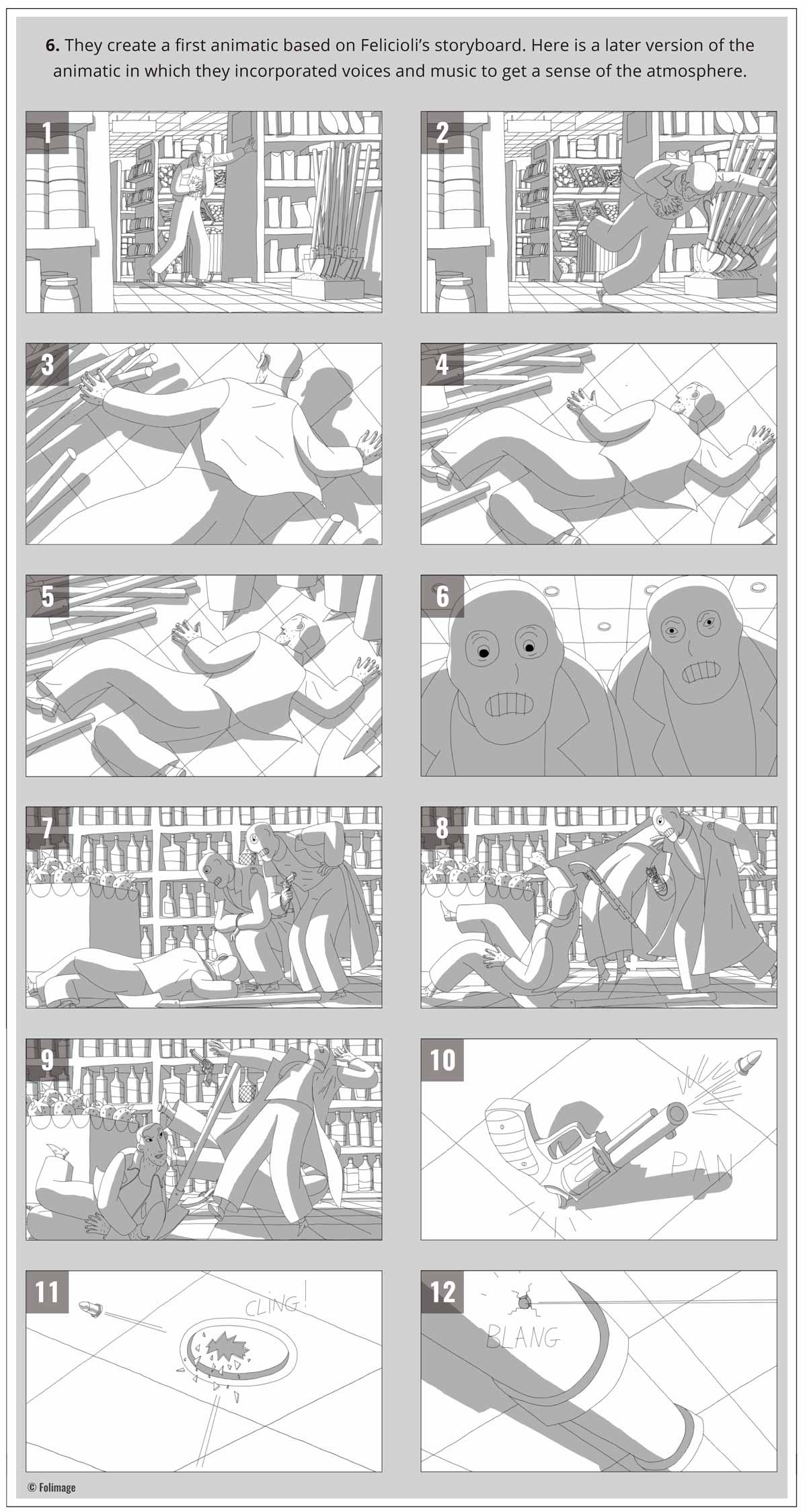
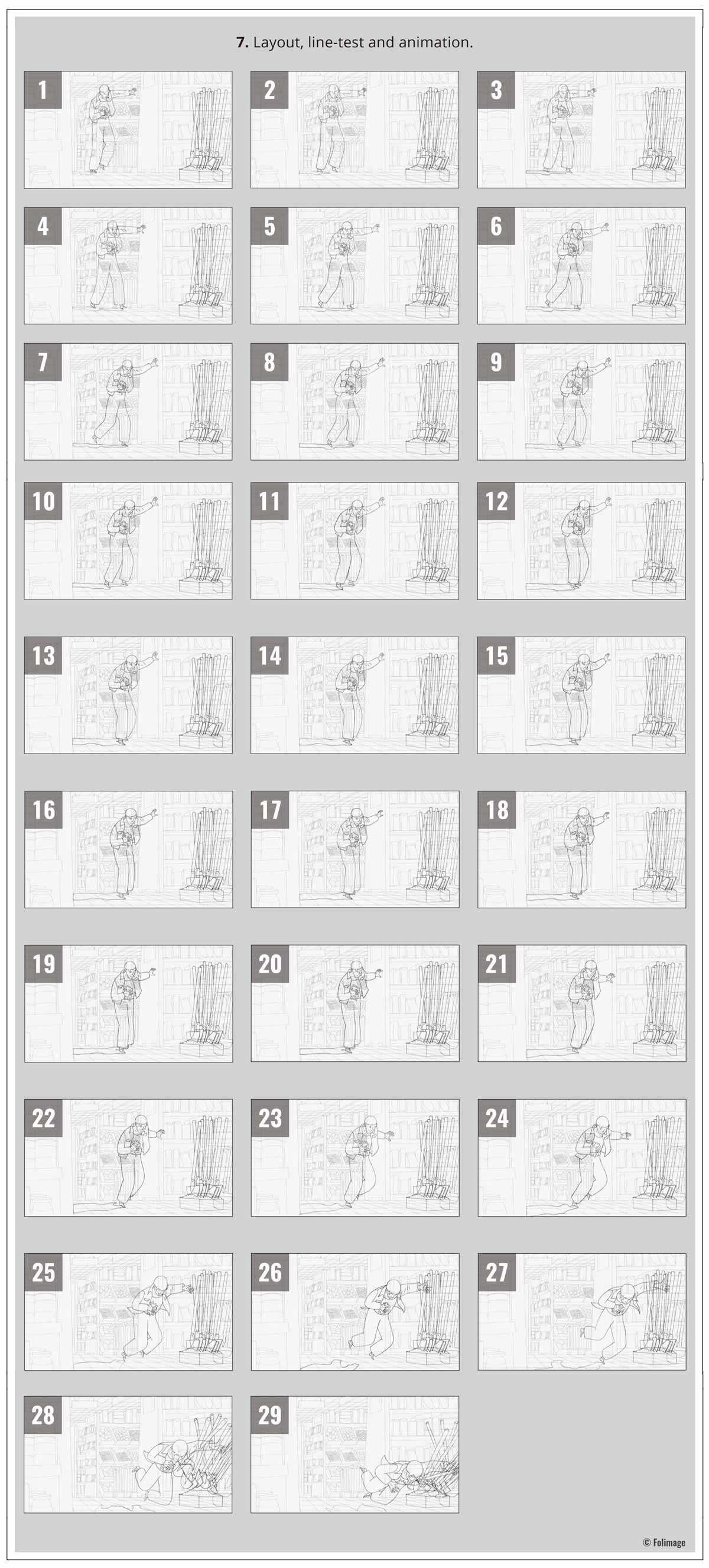
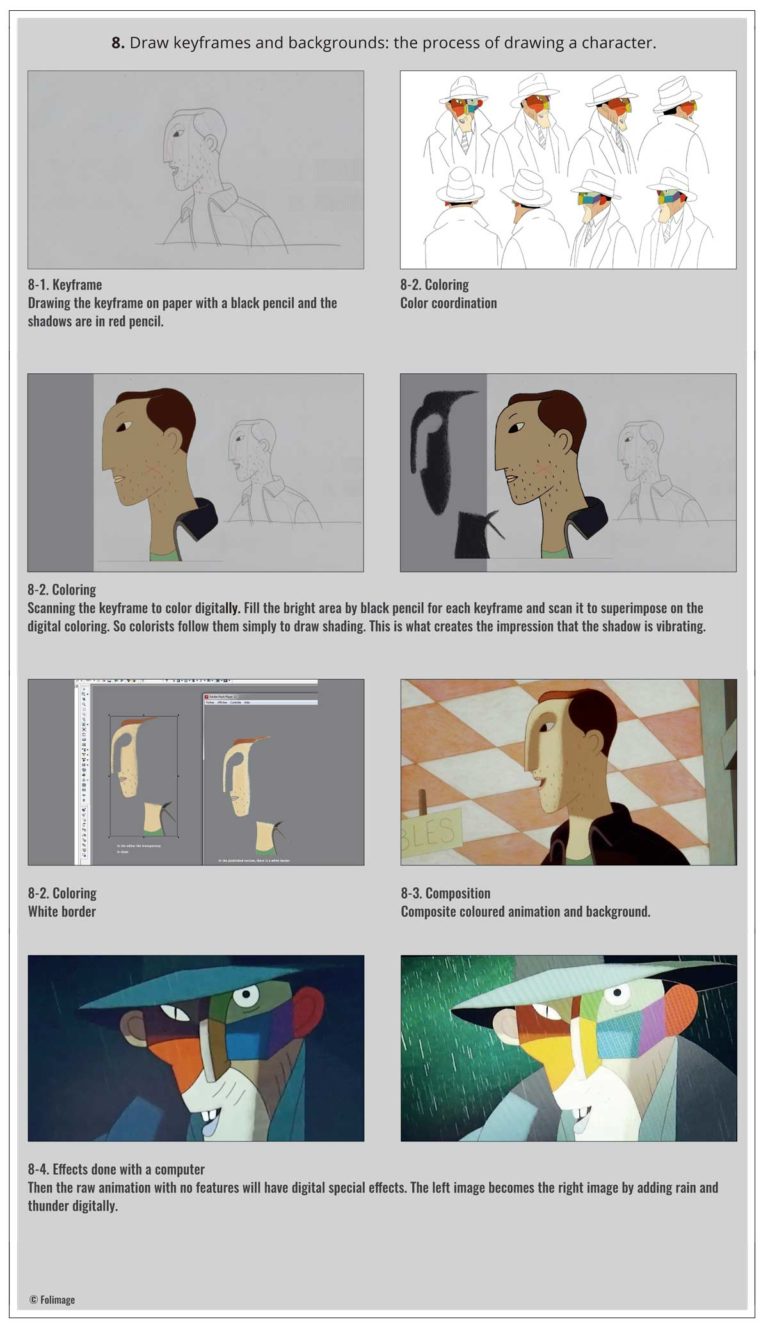
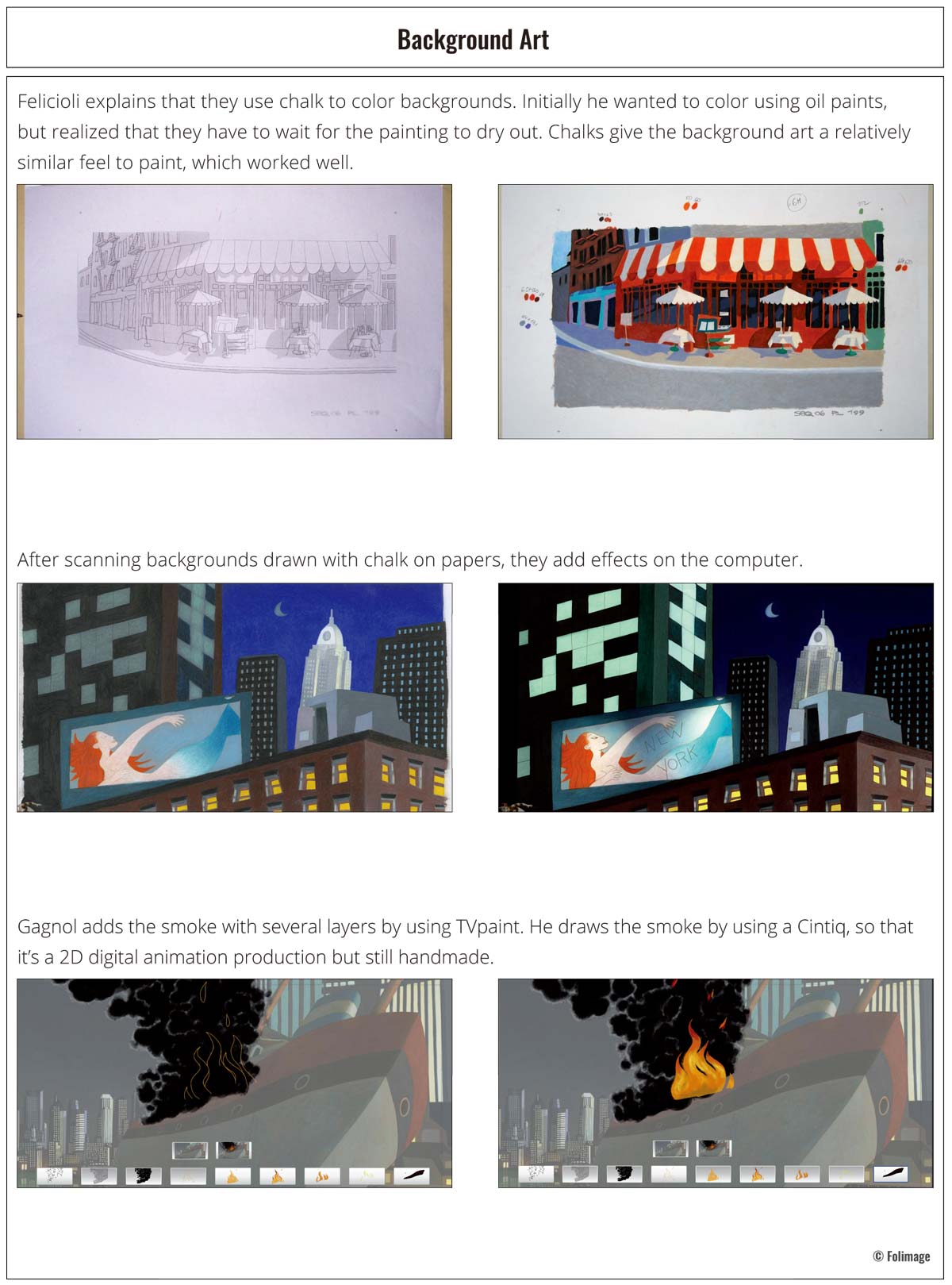
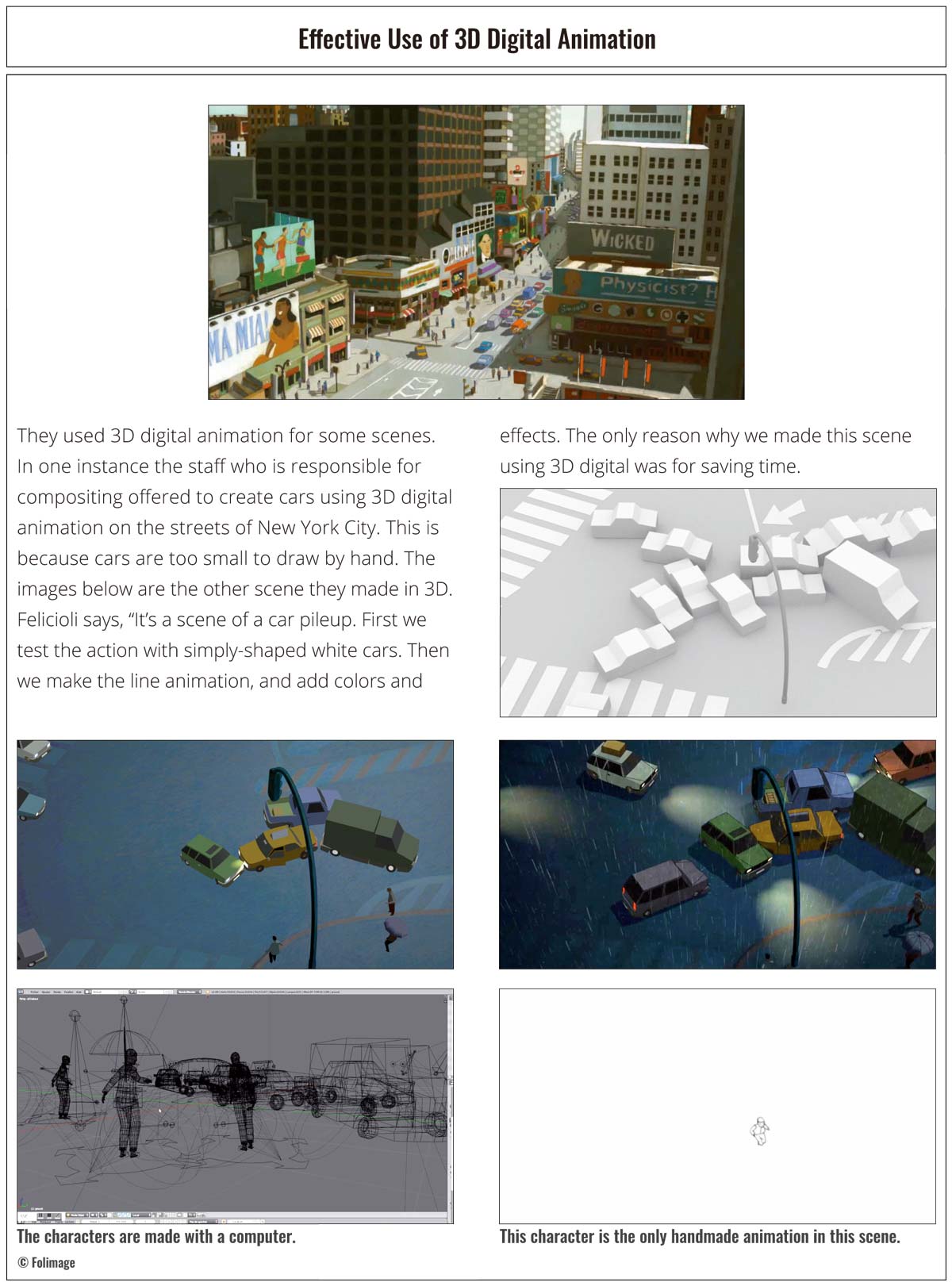
Next Feature Film: Tulip
Gagnol and Felicioli are moving on to the next film project titled Tulip. Gagnol says that he wanted to try something new with the film to which would directly link to the world of childhood after two films dedicated to thriller.
“In A Cat in Paris and Phantom Boy, children are immersed into the world of adults. Tulip is going to be the opposite. We are on the side of children and immersed into their way of seeing the world. I also wanted to write a story without baddies. All difficulties in Tulip are internal, the film is going to be about an eleven-year old girl, Tulip, fighting against her fear to grow”.
Gagnol also says that he has always loved monsters and fantastic creatures in films. “Jean-Loup’s creatures are very surprising and colorful and they don’t have anything frightening. This is a much more intimate story and softer than the two previous films”.
The atmosphere and touch of animation is expected to be different compared to Phantom Boy. “Phantom Boy is a film with a lot of dialogue and action to explain. With Tulip, we hope to use moods and silences between characters effectively to give time to breathe”, says Gagnol.
They expect that the graphic design of monsters could be problematic when it comes to animating them because they are very colorful with different patterns. They are still seeking the best way to color and not make it too difficult to animate. Gagnol tells us that they are also trying to find a way to help the animators use the graphics more effectively but not lose the originality of the design.
Their creative journey continues and we can look forward to the new world that they are creating and what we are going to encounter from their new artistic world of animation.
(Originally interviewed in French)



